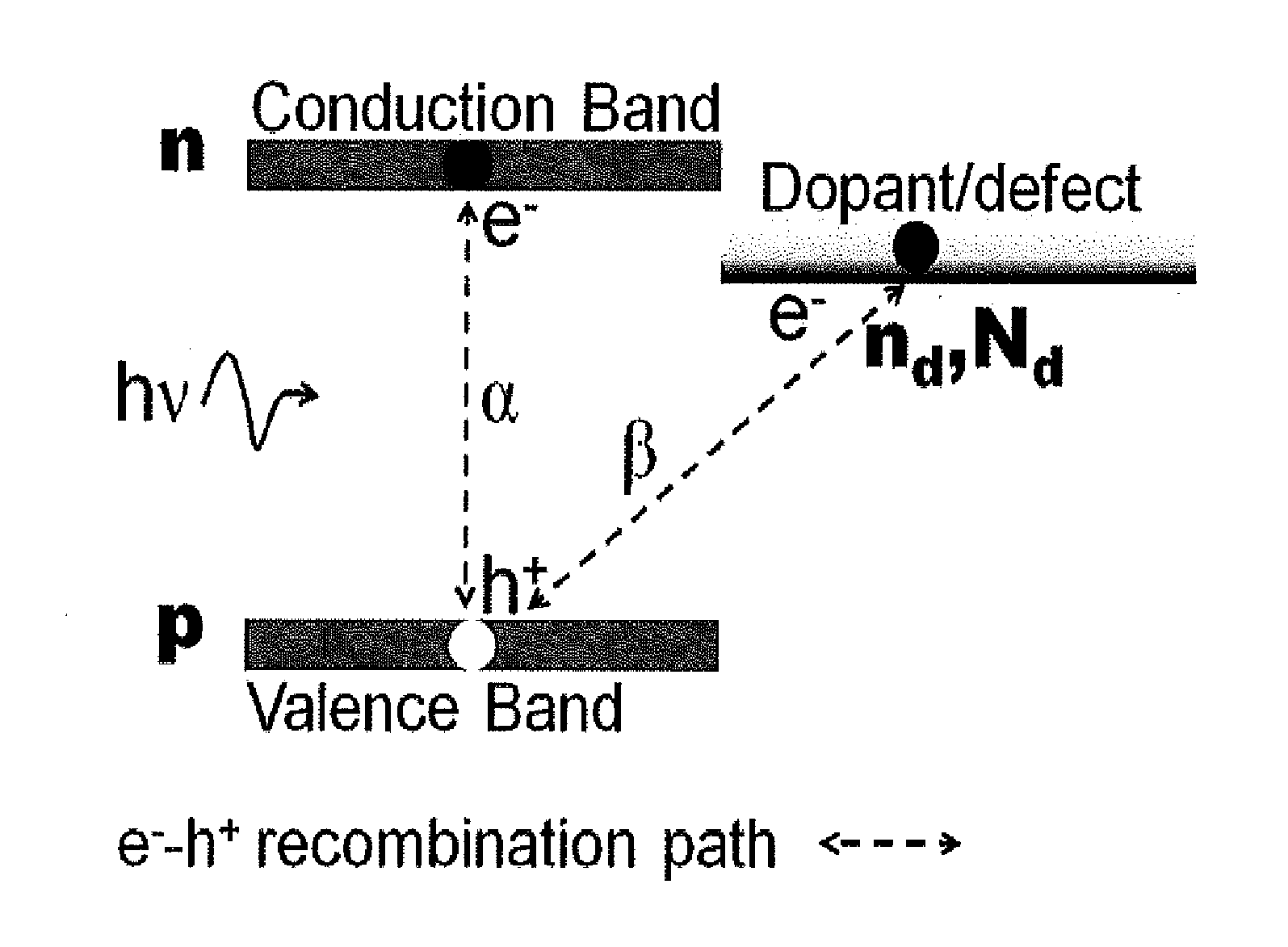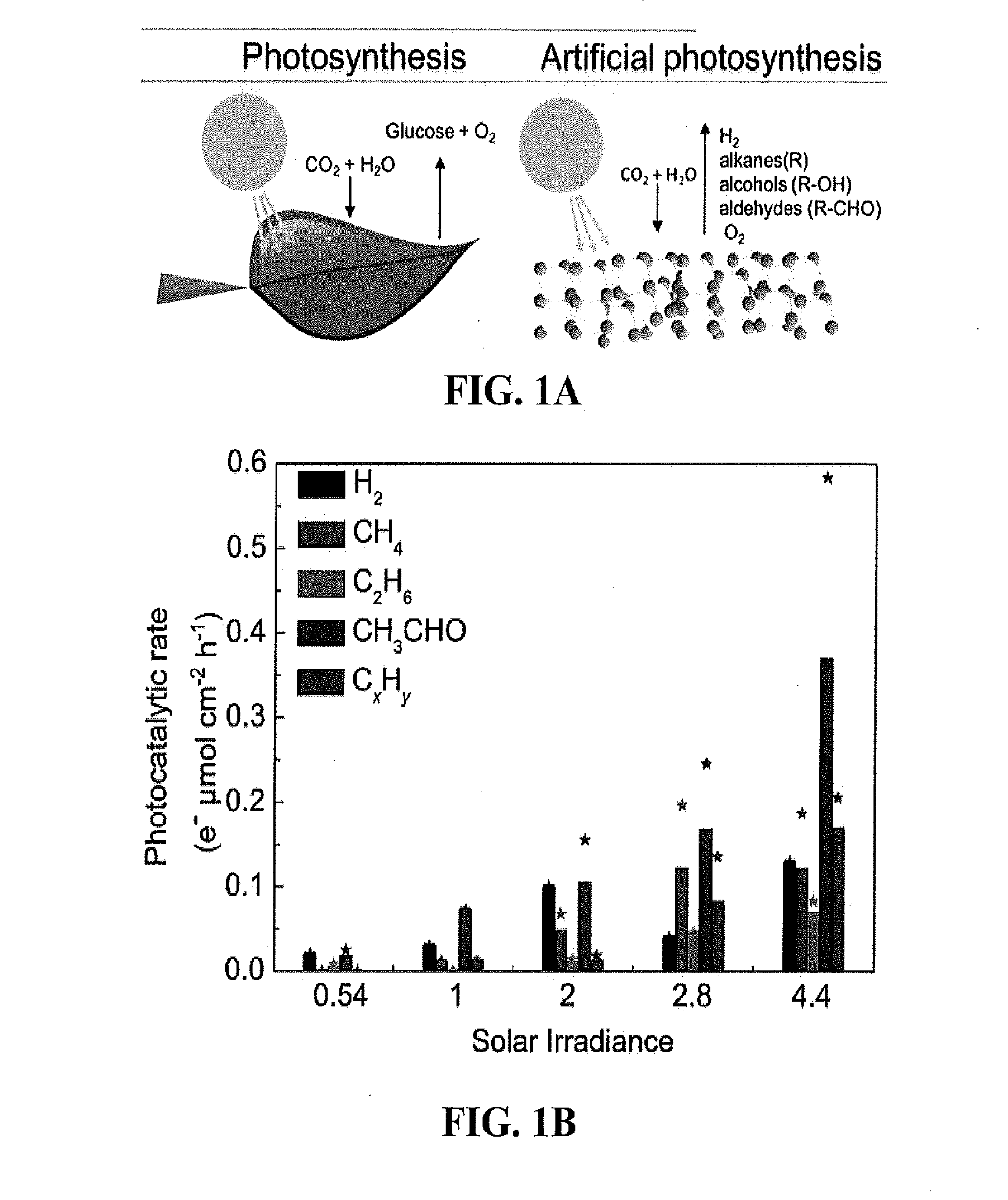Nanostructured photocatalysts and doped wide-bandgap semiconductors
a photocatalyst and nanostructure technology, applied in the field of nanostructured photocatalysts and semiconductors, can solve the problems of preventing rational design of new photocatalysts with higher efficiency and/or selectivity, affecting the observation of high photocatalytic activity and selectivity, and affecting the effect of chemical modification on the electronic structure of tiosub>2 /sub>semiconductor, etc., to achieve the effect o
- Summary
- Abstract
- Description
- Claims
- Application Information
AI Technical Summary
Benefits of technology
Problems solved by technology
Method used
Image
Examples
Embodiment Construction
[0065]The following description of technology is merely exemplary in nature of the subject matter, manufacture and use of one or more inventions, and is not intended to limit the scope, application, or uses of any specific invention claimed in this application or in such other applications as may be filed claiming priority to this application, or patents issuing therefrom. Regarding the methods disclosed, the order of the steps presented is exemplary in nature, and thus, the order of the steps can be different in various embodiments. Except in the examples, or where otherwise expressly indicated, all numerical quantities in this description, including amounts of material or conditions of reaction and / or use, are to be understood as modified by the word “about” in describing the broadest scope of the technology.
[0066]Photocatalyst for Carbon Dioxide-Water Reduction
[0067]Titanium dioxide (TiO2) has been extensively studied for several photocatalysis, photoelectrochemical, and catalyti...
PUM
| Property | Measurement | Unit |
|---|---|---|
| diameter | aaaaa | aaaaa |
| diameter | aaaaa | aaaaa |
| diameter | aaaaa | aaaaa |
Abstract
Description
Claims
Application Information
 Login to View More
Login to View More - R&D
- Intellectual Property
- Life Sciences
- Materials
- Tech Scout
- Unparalleled Data Quality
- Higher Quality Content
- 60% Fewer Hallucinations
Browse by: Latest US Patents, China's latest patents, Technical Efficacy Thesaurus, Application Domain, Technology Topic, Popular Technical Reports.
© 2025 PatSnap. All rights reserved.Legal|Privacy policy|Modern Slavery Act Transparency Statement|Sitemap|About US| Contact US: help@patsnap.com



